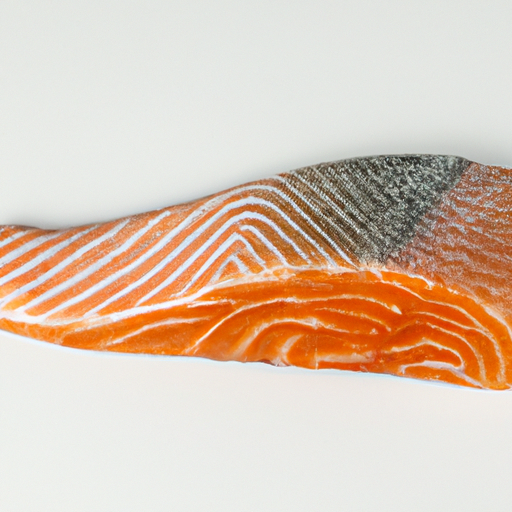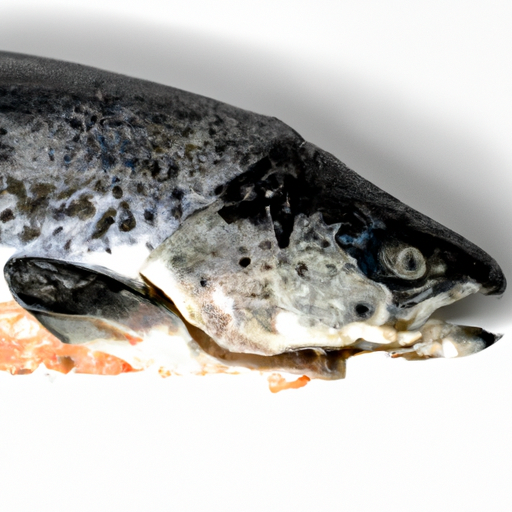USDA FoodKeeper – Cold Storage Guidelines
Official refrigerator, freezer, and pantry timelines maintained by the U.S. Department of Agriculture.
Visit USDA FoodKeeperFresh raw salmon is not just a culinary delight; it’s a nutritious powerhouse packed with omega-3 fatty acids. To enjoy its rich flavor and health benefits safely, be sure to store it in the fridge and consume it within two days—after that, it's best to toss it to avoid any foodborne risks.
30 most common foods with instant answers. Print it and stick it on your fridge—completely free! Want more? Upgrade to the complete guide with 70+ foods.
"According to USDA guidelines, fresh raw salmon should be stored in the refrigerator at 40°F or below and used within 1-2 days of purchase for optimal safety and quality."


Fridge
32-38°F (0-3°C)
Store in the coldest part of the fridge on ice
2 days
90 days
Unpleasant fishy smell, slimy texture, discolored flesh
Grilled, baked, in salads
Trout, Arctic char
The expiration date on fresh raw salmon indicates the date by which the fish should be consumed to ensure maximum freshness and safety. Consuming salmon past the expiration date can increase the risk of foodborne illness. On the other hand, the 'best quality' refers to the peak freshness and flavor of the salmon. While it is safe to consume salmon before the expiration date, it may not be at its best quality after that date.
To check if raw salmon has gone bad, look for any discoloration or sliminess on the surface. Fresh salmon should have a mild, ocean-like smell; if it smells sour or fishy, it may be spoiled. Additionally, the texture of fresh salmon should feel firm and slightly slippery; any mushiness or stickiness could indicate spoilage.
Salmon, being a seafood, is prone to contamination by bacteria such as Salmonella and Listeria if not handled properly. To reduce the risk of foodborne illness, it is crucial to ensure that the salmon is fresh and properly stored at the correct temperatures.
To store fresh raw salmon properly, it is recommended to keep it refrigerated at a temperature below 40°F (4°C). If storing for longer periods, consider wrapping the salmon in airtight packaging or vacuum-sealing it to prevent oxidation and freezer burn. Additionally, storing salmon in the coldest part of the refrigerator, typically the back or bottom shelf, can help maintain its freshness. When thawing frozen salmon, do so in the refrigerator overnight or under cold running water to preserve its texture and flavor.
Salmon holds significant cultural importance in many societies. In indigenous cultures like the Native American tribes in the Pacific Northwest and the Maori people of New Zealand, salmon plays a central role in traditional ceremonies and is considered a symbol of abundance and prosperity. Additionally, salmon is a popular fish in cuisines around the world, known for its rich flavor and nutritional benefits.
If Salmon Fresh Raw has been at room temperature for a few hours, it's best to discard it as it falls under the medium-risk category for food safety. Bacteria can multiply rapidly at room temperature, increasing the risk of foodborne illness.
Once opened, Salmon Fresh Raw should be consumed within 2 days if stored properly in the fridge. It's crucial to adhere to the recommended shelf life to minimize the risk of contamination and ensure food safety.
The type of container can impact Salmon Fresh Raw's shelf life. It is best stored in airtight containers to prevent exposure to air and moisture, which can accelerate spoilage. Opt for containers specifically designed for storing seafood to maintain freshness.
To prevent cross-contamination, it's recommended to store Salmon Fresh Raw separately from other foods, especially those that are ready-to-eat. Raw seafood can potentially transfer harmful bacteria to other foods, increasing the risk of foodborne illnesses.
When Salmon Fresh Raw is frozen, its texture may change upon thawing. Freezing can cause the fish to become slightly softer or mushier compared to its fresh state. To minimize texture changes, consider vacuum-sealing the fish before freezing.
Shelf life can vary between different brands of Salmon Fresh Raw due to factors like processing methods, packaging, and storage conditions. Always refer to the expiration date on the packaging and follow any specific storage instructions provided by the brand.
Once Salmon Fresh Raw is cooked, its shelf life changes. Cooked salmon should be consumed within 2 days when stored properly in the fridge. Cooking can kill harmful bacteria present in raw fish but can also introduce new contaminants if not handled and stored correctly.
Salmon Fresh Raw typically lasts longer when stored in colder temperatures, such as during winter. Higher temperatures in summer can accelerate bacterial growth and spoilage, shortening the shelf life of seafood. It's essential to adjust storage practices based on seasonal variations.
When transporting Salmon Fresh Raw for a few hours, use a portable cooler with ice packs to maintain a cold temperature. Ensure the fish is securely packed to prevent leaks and contamination. Once at your destination, refrigerate the fish promptly to maintain freshness.
30 most common foods with instant answers. Print it and stick it on your fridge—completely free! Want more? Upgrade to the complete guide with 70+ foods.
Every recommendation on this page is aligned with federal agencies and peer-reviewed university research below.
Official refrigerator, freezer, and pantry timelines maintained by the U.S. Department of Agriculture.
Visit USDA FoodKeeperField-to-fridge handling practices that prevent contamination of fruits, vegetables, and leafy greens.
Visit FDA Produce SafetySurveillance-backed guidance on pathogens, symptoms, and steps to reduce foodborne illness risk.
Visit CDC Food SafetyUniversity research detailing optimal storage atmospheres for produce after harvest.
Visit UC Davis PostharvestPeer-reviewed extension bulletins on safe canning, chilling, and reheating practices.
Visit Penn State ExtensionNeed deeper reading? Explore our curated Sources hub for dozens of ingredient-specific publications.
Scan your food directly and get instant safety info using our AI-powered camera feature.
Grains & Pasta
View expiration date and storage guide →
Herbs and Fresh Produce
View expiration date and storage guide →
Meat & Poultry
View expiration date and storage guide →
Herbs and Fresh Produce
View expiration date and storage guide →
Dairy Products
View expiration date and storage guide →
Fruits & Vegetables
View expiration date and storage guide →
Dairy Products
View expiration date and storage guide →
Meat & Poultry
View expiration date and storage guide →
Dairy Products
View expiration date and storage guide →
Important: These are general guidelines based on authoritative sources listed above. Always use your best judgment and when in doubt, throw it out. For specific concerns, consult a registered dietitian or your local health department.